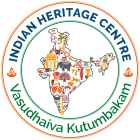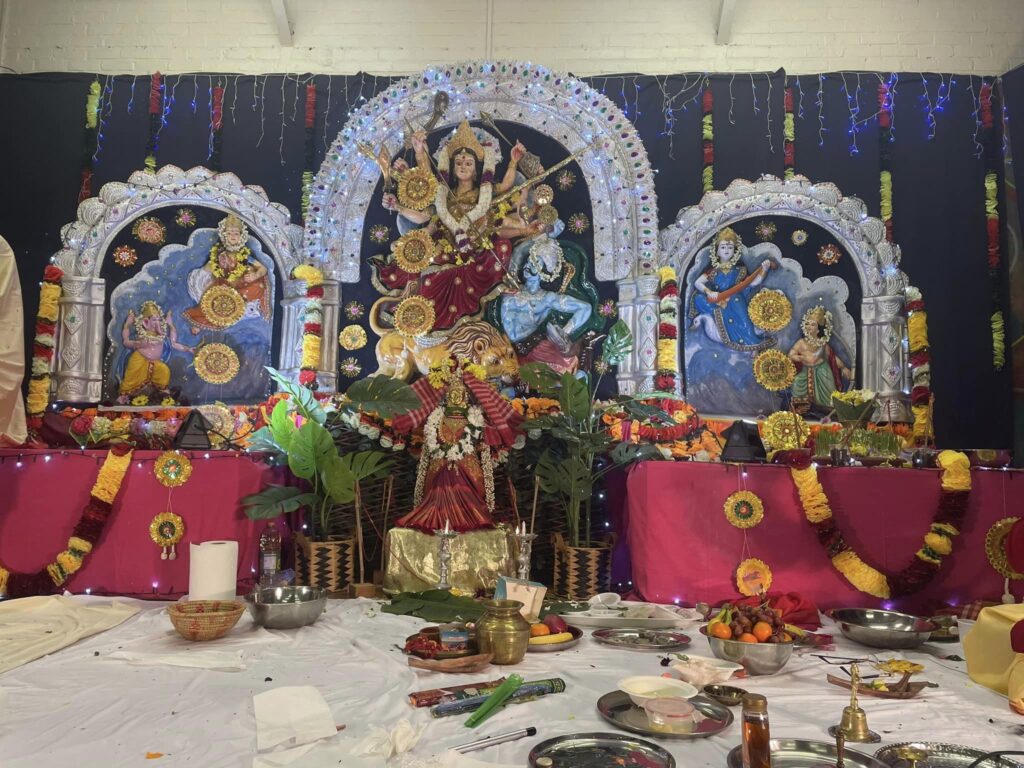Navaratri is a Hindu festival that lasts nine nights and marks the auspicious days on the lunar calendar. The festival is celebrated across India, and is centered on worshipping the nine forms of the female goddess Shakti (Durga). Nav means nine and Ratri means nights. This year, the festival starts on 15 October and ends on Tuesday 24 October.
Durga is best known for killing an evil demon in a battle that lasted nine days and nights and that is why the festival lasts for nine days and nights as well. Each day is represented by a different colour which symbolises one of her distinct characteristics or traits. Many Hindus wear a different coloured traditional outfit each day to reflect this.
During the festival, Hindus perform puja and offer prayers to the goddess Durga.
Navratri’s most notable features are the Garba and Dandiya Raas dance performances. Navaratri is also marked by the display of beautiful clay idols of the goddess Durga in homes and temples, which are worshipped and adorned with flowers and other offerings.
Significance of Navratri
Many legends are associated with Navratri, and the most widely accepted one is the battle between the goddess Durga and the demon Mahishasura. The festival mainly celebrates the victory of good over evil.
Celebration of Navratri 2023 across India
North India:
In North India, Navratri is celebrated as the victory of Lord Rama over the evil Ravana.
Western India:
In West India, especially in Gujarat, Navratri is one of the main festivals. Women keep fast during the day to worship Goddess Shakti. They decorate their homes and visit the nearby temple. At night, Garba events – the traditional dance of Gujarat – are organised where men and women dance with sticks called dandiya sticks. The word Garba comes from the Sanskrit word for womb, which means life.
Eastern India: In Eastern India, mainly West Bengal and the Northeast, Navratri is known as Durga Puja. People celebrate goddess Durga’s triumph over Mahishasura. Women deck up in colours of white and red, and the cities are decorated with lights.
South India: South India has a unique way of celebrating Navratri by making an exhibition of figurines and dolls. The city of Mysore in Karnataka is world-famous for its Dasara celebration.
Dasara:
Dasara is the 10th day of the festival. Dussehra, also known as Vijayadashami or “the day of victory,” comes after the nine nights of Navratri. Vijayadasami reveres Durga’s and Rama’s victory over evil depending on the region.
Shami Puja and Ayudha Puja is the key part of the Dasara celebration.
The story behind Shammi Pooja:
Lord Rama prayed for his victory in front of the Shami tree before marching to Lanka.
In Dwaparyug, Pandavas had hidden their weapons on the branches of the Shami tree for a year before going to Virata. After completion of a year, they returned to the Shami tree and found that their weapons were safe in the branches of the tree. They worshipped the tree for keeping their weapons safe and used the same weapons against Kauravas.
In South India, people offer puja to the Shami tree and bring leaves home. There is a tradition of giving these leaves to the head of the family and taking their blessings.

